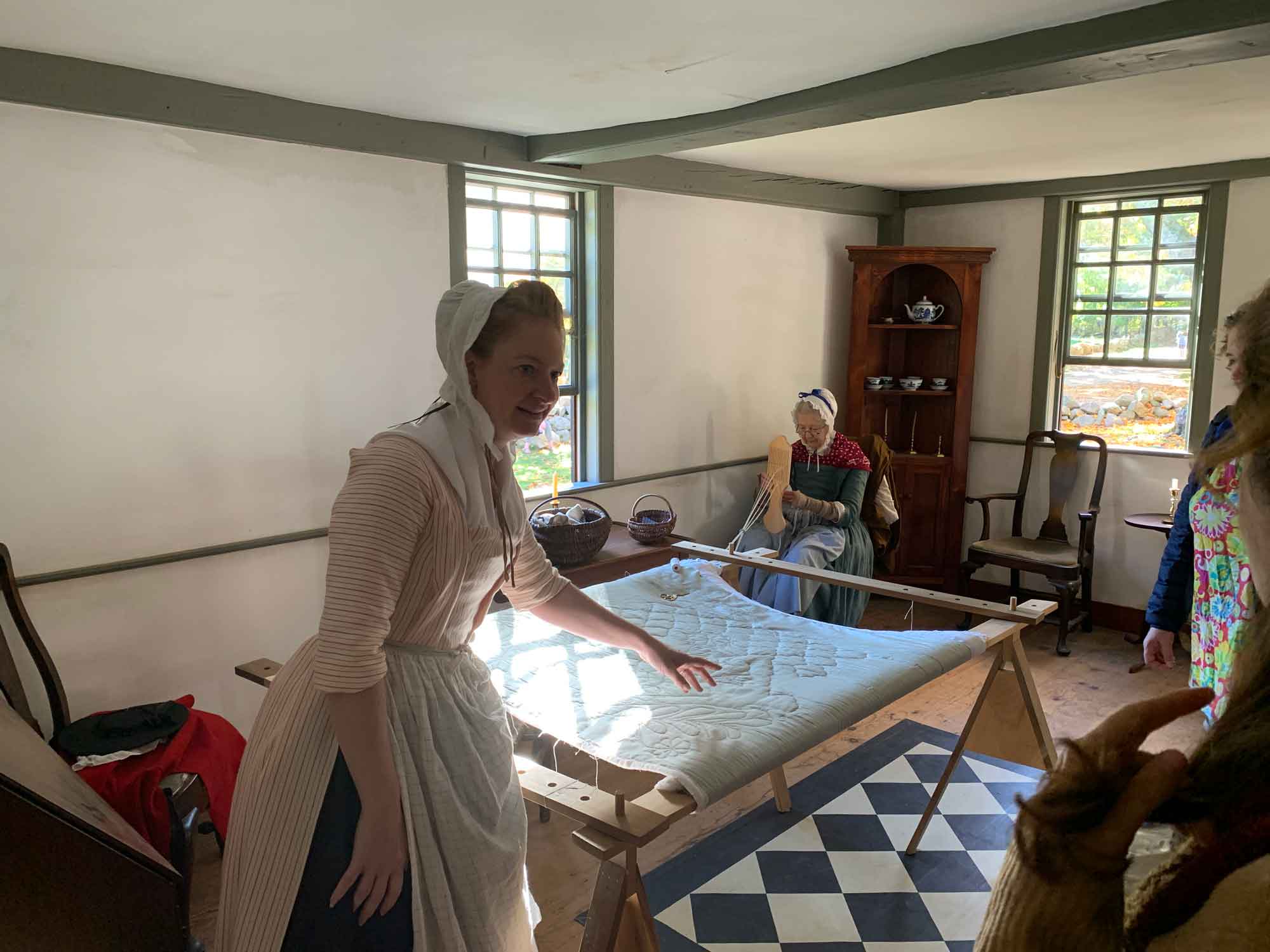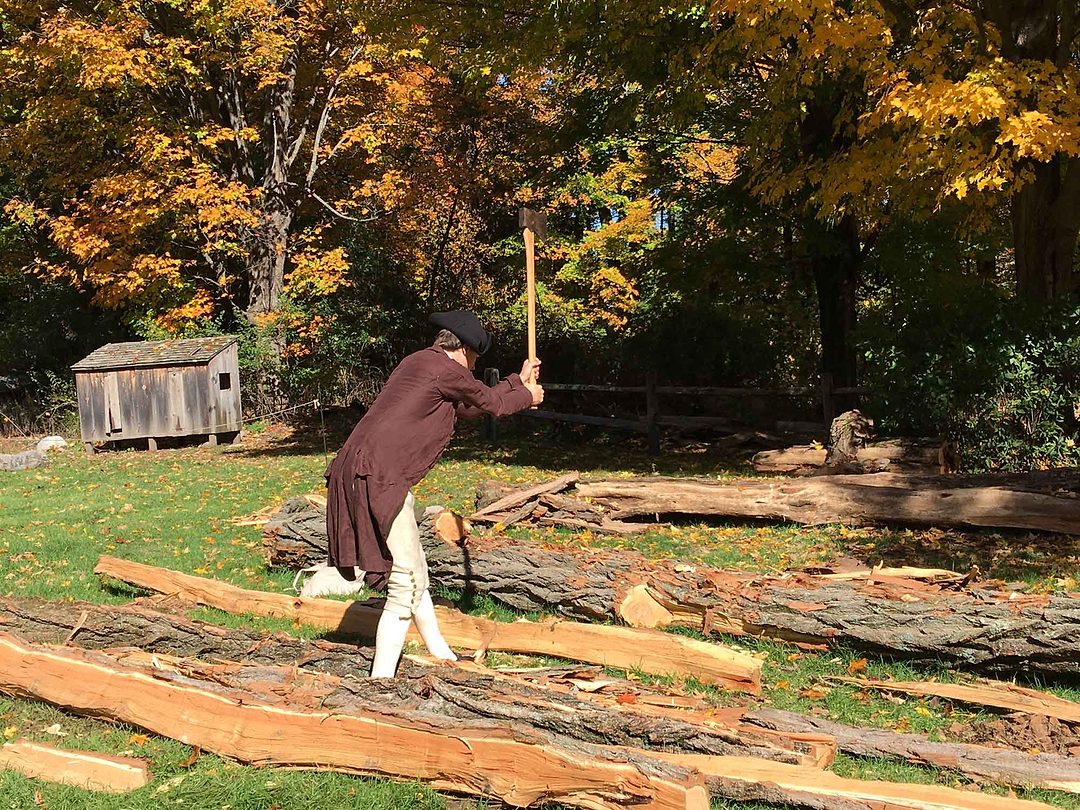 In the autumn of 1774, colonists in Concord were preparing for the cold winter months and a potential military conflict with the British Army. This particular winter was quite difficult due to a domino cause and effect of events. As Jim Hollister, a park ranger with Minute Man National Historical Park, notes, “As a result of the Boston Tea Party in 1773, Parliament decided to make an example of Massachusetts Bay.” General Thomas Gage, who already commanded all British forces in North America, was appointed military governor of the Massachusetts Bay Colony in 1774. As one of his first official acts, Gage oversaw the closing of the port of Boston. He then executed Britain’s order to disband the elected local council and replace it with a council appointed by the King.
In the autumn of 1774, colonists in Concord were preparing for the cold winter months and a potential military conflict with the British Army. This particular winter was quite difficult due to a domino cause and effect of events. As Jim Hollister, a park ranger with Minute Man National Historical Park, notes, “As a result of the Boston Tea Party in 1773, Parliament decided to make an example of Massachusetts Bay.” General Thomas Gage, who already commanded all British forces in North America, was appointed military governor of the Massachusetts Bay Colony in 1774. As one of his first official acts, Gage oversaw the closing of the port of Boston. He then executed Britain’s order to disband the elected local council and replace it with a council appointed by the King.
The effects of these decisions tipped the first of the dominos, and the rest fell quickly. Colonial leaders began to organize and grow their militias by stockpiling arms, ammunition, and provisions to equip 15,000 men. Militia duty was now mandatory for any man between the ages of 16 and 60. Hollister says, “As they were preparing to go to war, many towns raised companies of volunteers who trained twice per week and would be ready at a minute’s notice, hence they were known as minute men.” In addition, colonists were laying out money for stockpiles of gunpowder, provisions, weapons, and firearms and creating special units to support the countryside areas. While the Boston Tea Party was planned and executed in the Boston area, colonists in the countryside felt the impact of the port closures. In October 1774, the First Continental Congress called for a boycott of British goods. Women began to produce necessities at home instead of purchasing imports. This altered their workload as they sought to clothe and feed their families. Everything now was truly made in America.
 Courtesy of the Friends of Minute Man National Park
Courtesy of the Friends of Minute Man National ParkAs the weather turned cooler and then dropped to freezing temperatures, the need for warm winter clothing became critical. As David Robinson notes in his article, “Coping with Cold,” “Mothers took time to teach their children, usually their daughters, to spin fibers into threads. This was done so yarn could either knit a warmer sweater, to darn socks, or repair clothes that had become worn.”1 In addition, hoods were added to heavy cloaks to shield wearers from the bitter winds. Given the lack of imports, women were creative and looked for any cloth scraps and worn-out clothing they could find and turned the fabric into quilts or coverlets. Any other fiber available was frequently quilted into coats to keep colonists warm.
Farmers knew the importance of selecting the right crops and succession planting to ensure that food was available throughout the long winters. Crops that lasted the longest were planted later in the spring as they could remain in the root cellars until well past the last snowfall. These were mostly root crops such as parsnips, carrots, turnips, and beets. Other crops that spoiled a bit easier were canned to add to the longevity of their freshness; cucumbers became pickles, apples became applesauce or apple butter, or the apples were pressed to make cider. Fruits and nuts were dried in the summer heat and provided an important source of nutrition during winter. Meats were either salted or smoked, turning them into beef jerky or smoked bacon. Grain from the fields was processed to for making bread or for animal feed. Finally, seeds were picked and stored in a dry area of the root cellar to be planted in the spring.
 Courtesy of the Friends of Minute Man National Park
Courtesy of the Friends of Minute Man National ParkA steady supply of firewood was critical to surviving a New England winter, and with the need to house family, refugees, and soldiers, keeping everyone fed and warm was a priority. Enormous piles of firewood were cut and stacked during dry springtime months. It was important that they prepared enough firewood to last the entire winter and early spring. This allowed for the wood to dry so it would burn cleaner and longer. Once the fire was started at the beginning of the season, it was continually fed to keep consistent heat throughout the winter.
 Courtesy of the Friends of Minute Man National Park
Courtesy of the Friends of Minute Man National ParkMost colonists lived in cabins made from long timbers or logs. The logs were long but not always straight, so insulating the gaps was something they did to prepare for the wintertime, using whatever was available, mud, cloth, or even grass. Cows were needed for their milk, chickens for their eggs, and pigs for their meat. As a result, repairs to the barns, fencing, and outbuildings happened much as they did for the cabins. Fencing and barns were repaired, new hay was laid for nesting, and stalls were cleaned out to shelter as many animals as possible.
Preparing for the winter months in New England always entailed planning, hard work, and frugality, but the fall and winter of 1774 brought the added challenge of preparing for war. Concordians banded together to meet whatever obstacles arose and not only survived but helped create a new nation.


